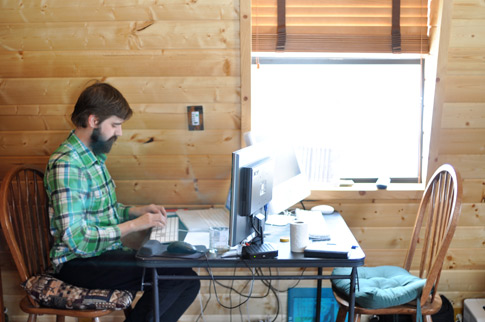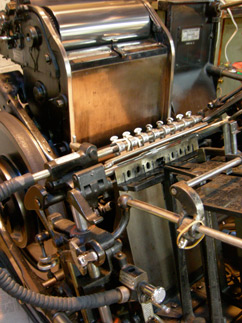Work of art: Online store for buyers, sellers
art meets design art world artist resources bay area blog collecting resources frontier new models others lives press
art meets design art world artist resources bay area blog collecting resources frontier new models others lives press
art and politics art world blog frontier new models opportunities others lives
blog fashion others lives photography
art and craft artist resources blog businessy stuff internet others lives
bay area blog others lives quotes
 This quote was found in the Berkeley Rep program for In the Wake by Lisa Kron, which, incidentally, is one of the best plays I have seen in some time. Go see it!
This quote was found in the Berkeley Rep program for In the Wake by Lisa Kron, which, incidentally, is one of the best plays I have seen in some time. Go see it!
Chad Jones sat down with Susan Medak on her 20 year anniversary as Berkeley Rep’s Managing Director. This quote resonated strongly with us because we think along the same lines about the work we produce, the context we provide, and the subscribers that provide the support for it to all happen.
Why do you think you and Berkeley Rep have worked so well together?
“If we have been successful, it’s been in part because we produce what we care about, and what we care about turns out to be an aesthetic that is shared by our community. This formula wouldn’t work in every community. We’re in Berkeley, in the Bay Area, and that gives us a certain license to do the kind of work we do. We have taken responsibility for building an audience and bringing that audience along with us. We’ve taken a lot of responsibility for helping audiences enjoy the work as much as we do.
Context is all- and that’s my philosophy about everything. The more context we can provide, the richer the audience’s experience. Our audiences are intelligent and thoughtful, and we have a lot of respect for them. “
Sometimes it seems trite to say that you just have to keep working, even if what you’re making isn’t so great. But part of the creative process, and those that ultimately “succeed” in creative fields are those who have the faith and perseverance to make it through the time when the only thing that seems to make sense is to give up.
Ira Glass gives us the faith and courage to keep going.
blog others lives quotes value of art
“Why go on? I believe in art and artist as perhaps society’s last free agents. Artists and children augur change, and no one listens to children.”
from “Personal Economy #11” by Anonymous
included in “Art Work: A National Conversation about Art, Labor, and Economics“
bay area blog CA environment life without a car others lives
In a study funded by the makers of Nalgene products, the habits of 3,750 individuals living in the top 25 largest U.S. cities were surveyed, finding that San Francisco is America’s least wasteful city. (Hooray!–Oakland wasn’t surveyed)
The study gauged behavior on waste, sustainability, shopping, transportation and more. The results were weighted to give more credit to behaviors that had immediate and significant impact on the planet (e.g., driving less, recycling or reducing trash) to small habits that are more indicative of a mindset and non-wasteful approach to life (e.g., reusing containers, limiting shower time or saving wrapping paper and ribbons).
The study shows that more and more people are readily embracing small, everyday habits to cut waste, but convenience is still trumping prudence when it comes to significant wasteful behavior including transportation and personal conservation efforts. (public transportation, composting, using a rain barrel and a clothesline, and avoiding using a car for trips under 2 miles)
I found this sortof amazing:
*60 percent of urban Americans that live in a city with public transportation and own a car, said they never use public transportation
*65 percent of urban Americans are planning to drive for trips that less than two miles from home rather than taking public transportation, biking and/or walking
*We’re still a car culture. 69 percent of those urban Americans surveyed do not plan on taking public transportation
And so you know:#2=NYC, #3=Portland, #25(last place)=Atlanta
blog blogs others lives photography

It’s always fun to check out the homes of creative people. Here’s a mother lode from all over the world.
blog opportunities others lives
There’s been a bunch of hubub about it lately: NPR, CNN, The New York Times, 20/20, and on. Mitch Cope and Gina Reichert, a couple living and working in Detroit, are generating a lot of attention with their effort to create a new perspective on Detroit: as a place for artists. They are living it too. Because of the unbelievably cheap cost of lots and buildings, they have bought up a bunch in a one block area (two empty lots for gardens, one as their own home, one or two which they bought just because they were so damn cheap- then sold to friends, and one to create a new model of affordable, off the grid living: Powerhouse- which is to become a community art center and artists’ residency program)
blog others lives outside personal pictures Utah
So we’re up and running in Utah and it’s pretty nice. This morning we went on an early morning snowshoe before work. I thought I would give you a litte snapshot.

Our cozy home

Oliver setup our desk. He gave me the window, but also glare. I still feel like I won.

View from my "office"


An early snowshoe and the muddy, muddy road that leads to our house.
artist interviews Artist Interviews Hermosa Beach others lives TPG9
David Horvitz was interviewed via Skype on February 13th, 2009 by Oliver Wise and Eleanor Hanson Wise of The Present Group.
Listen: (~15:50)
bay area blog CA events others lives personal pictures



From Wednesday night’s vigil and rally at City Hall, San Francisco
artist interviews blog others lives reblog
From Freize:
Over the last decades, the art world has become more and more professionalized. For an online-only survey, frieze asked 16 curators, writers and artists how they thought the languages, codes, education and business methods resulting from this process are affecting creative freedom. Is the art world too professionalized – or not enough?
art and politics art market blog others lives TPG8
An artist can have a stable life and still make good art.
I was watching the Barbara Walters interviews after the Oscars last night and she was giving Anne Hathaway a hard time or just kept talking about how her parents were still together, how she had a loving family, and then saying things like, “it doesn’t seem like the right drama for an actor…where’s the angst, where’s the pain?” Hathaway feels the need then to sortof defend her luck, saying that there were certainly bad things that were in her life too…. that she isn’t just a good girl… that she is really “debaucherous” sometimes.
Oliver and I have had this discussion many a time about how there is this huge cultural stigma, even within artist communities, that says you must suffer in order to make good work. I just don’t think it is true. And somebody’s got to start saying it.
Last week I was watching a video from the group W.A.G.E. (Working Artists and the Greater Economy) when they took part in the Democracy in America show put on by Creative Time last fall. The second speaker, K8 Hardy, addressed this idea. She pointed out that the collectors in the art market like that artists are poor, and how this feeds into this whole system. “They want to keep us on the edge because they stupidly think that it makes the work more interesting…. They want us to die poor. That would make their collection more valuable… They romanticize our poverty and outsider status from some misinformed idea or opinion that it makes an artist better to suffer.”
Democracy in America: W.A.G.E. from Creative Time on Vimeo.
So let’s start talking about it. Let’s try to banish this stereotype. Sure, some art is good and comes from suffering. But that does not mean that it is the only way that good art comes about.
artist resources bay area blog making of others lives TPG8
A Sneak Peak into the making of TPG8 and into the life of James D. Lang, the owner of Horwinski Printing Company. Founded in 1906 and dedicated to the craft of letterpress, this business has a long history of working with artists, unions, politicians, and businesses of all sizes to spread their message.



more after the jump >> Continue Reading »
art market blog good things others lives
My sister sent me this video yesterday. Maybe this is a modern form of patronage. Rather than commissioning a work solely for oneself, funding is provided for a project to happen and the final results are available to all. This isn’t a new idea; think of orgainzations like Creative Time and Public Art Fund, who solicit donations and funding from a wide variety of sources, and then help fund artists projects for a wider public to experience. The only difference is that this is a single corporate sponsor.
The creator of this video, Matt Harding, has made three of these videos now. The first was all by himself, just a thing for his friends and family to laugh at. But somehow, in that mystery that every ad executive craves for, the video went viral and within a month his server was crashing from all the traffic (YouTube wasn’t around yet) and millions of viewers had seen his goofy dance. Then he got a proposal from Stride.
They didn’t want to be involved, all they wanted to do was sponsor Matt to do another video. So they did, two videos really. It is obvious that this is not a commercial for Stride Gum. With the sponsor recognized only after all the credits have rolled, it is pretty inconspicuous. Stride could make a commercial in the exact same way, but that might kill whatever it is that made these videos so appealing. Maybe because it would lose its sponteneity, or the viewer lose the direct connection between the creator and the product, or maybe just because ads turn people off, it’s safe to say an overt Stride Gum commercial wouldn’t get 5 million views in just a couple months. What’s so great about these videos is that, from the start, they were fueled by the desire to make something, by art. I have to say though, whatever Stride was looking for to happen, it worked on me. Though I don’t buy gum, I have a good feeling about Stride.
Anyways, I thought this was a good followup to yesterday’s post, figuring out how people do what they do.

I remember a time in high school when I all of a sudden realized that there are some artists who actually make a living at being artists. Funny: it was sortof a shock.
I am always interested to see how other artists and creative people of all varieties make thier lives work. I like listening to interviews, seeing where they live and work, and hearing about their lives in general. It seems like they must have a secret. Not with the internet around! aha.
On my Desk: where artists, illustrators, designers, & creative folk share the stuff on their desks (or studios)
WHEREWEDOWHATWEDO: “is a community-built visual database of the spaces in which we spend our days, nights or both doing whatever it is we do. While it may not be the freshest idea in the attic, we thought it would be a fun project to work on during down time. As well as we wanted to give this interesting and slightly voyeuristic concept a place all its own. ”

Lastly, I just found out about a project that our friend Helena Keefe has done, called “Living Proof“: a collection of stories about the various ways in which artists make a living. I heart stories.
Lego Hello World
I wish all my printers were made of legos.
LIFE photo archive hosted by Google
Images from Life Magazine going back to 1860′s, hosted by Google
Coming Face To Face With The President
Well crafted story about an under-heard point of view.
In California, Pot Is Now an Art Patron
A new funding source for the arts – reaping big rewards and funding many projects. It’s pot.
Notes on Portraiture in the Facebook Age
Celebrity Book Club: A List to End All Lists
Because, well, it’s sortof awesome.
Are "Artists' Statements" Really Necessary?
The pros and cons about that nemesis for most artists.
This to That
You tell it what you’ve got and it’ll tell you what to glue them together with.
Work of art: Online store for buyers, sellers
Not the TV show! Kelly Lynn Jones from Little Paper Planes is interviewed on her project, gives us a cheat sheet to local affordable art resources.